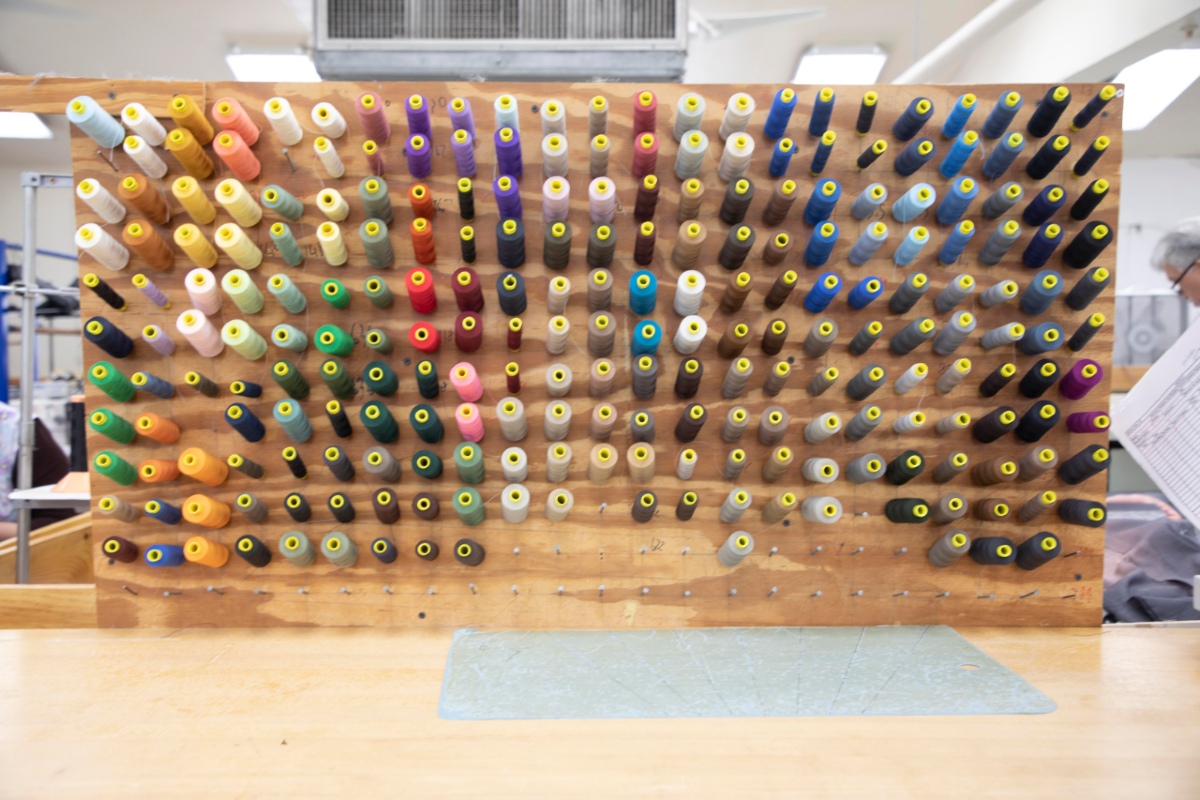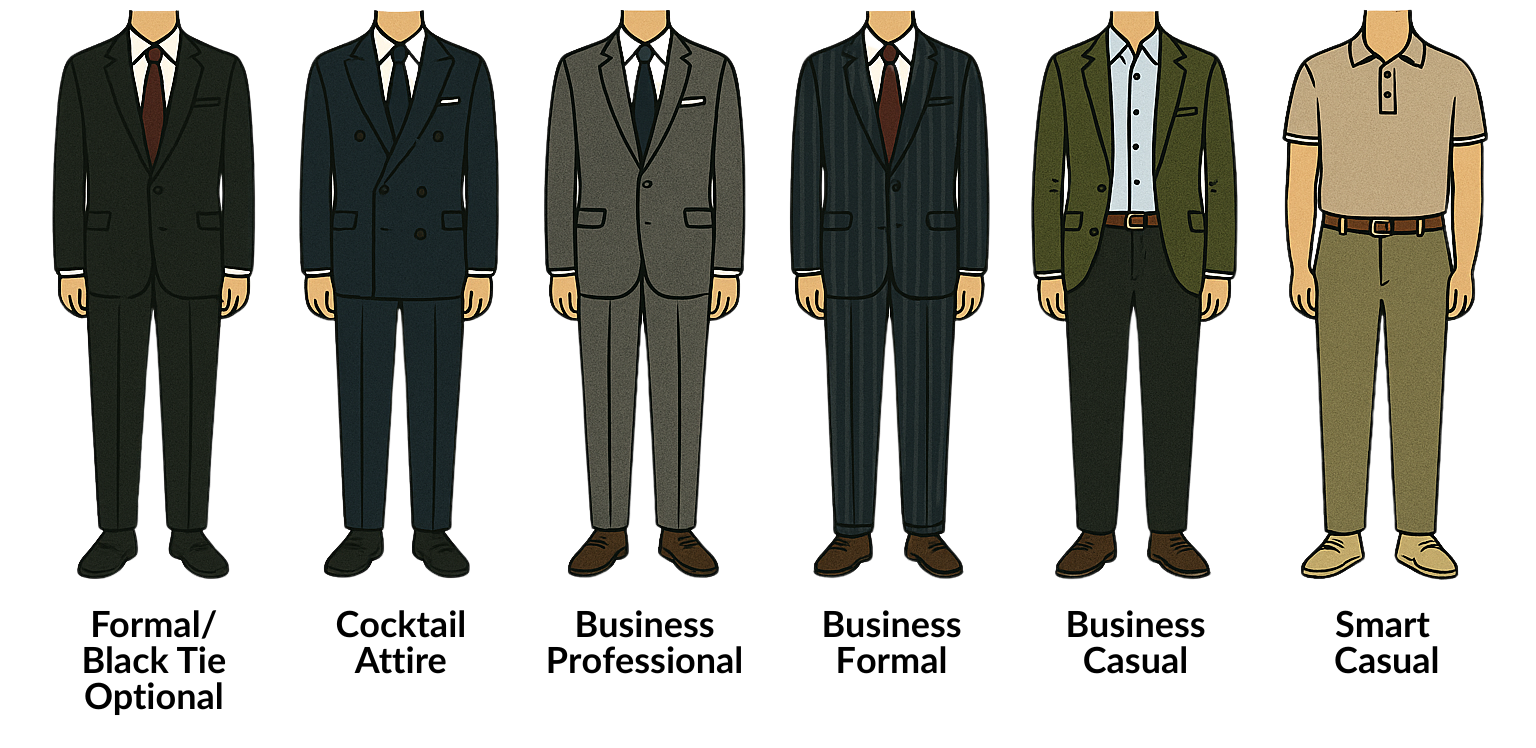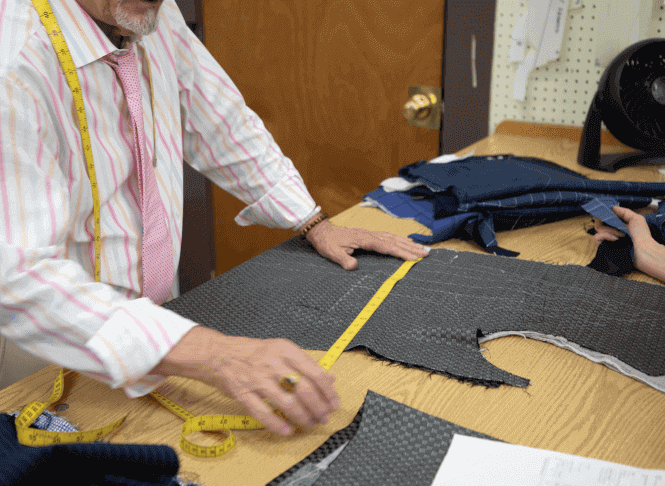Though we carry some linens and other blends, the lion’s share of our custom shirtings are cotton. Needless to say, cotton is a ubiquitous textiles – so much so that some of us may remember the 1990’s ad campaign in which it was dubbed “the fabric of our lives.” To paint with broad brush strokes, cotton goods are made by weaving yarn into fabric. Weaving itself is a complex process, and there are many ways to weave cotton to achieve different types of shirts. With that in mind, we thought this guide to cotton weaves would give folks a rudimentary understanding of what goes into the shirts we wear.
Weaving Basics: Warp & Weft
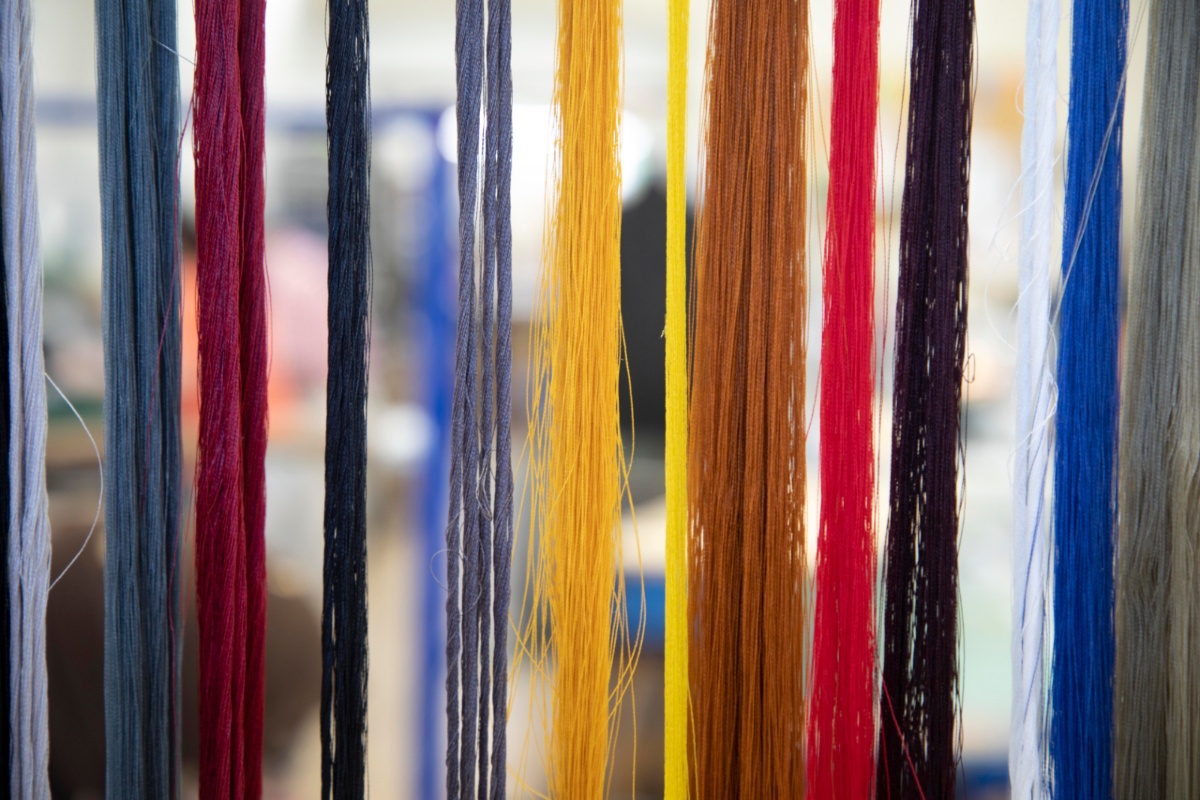 First things first: when we talk about weaving, the terms “warp” and “weft” come up. These are the two basic components used in weaving, and they refer to the two “directions” of yarn – “warp” is longitudinal, or “up-and-down”. “Weft” is latitudinal, or side-to-side. Warp yarns are held stationary in tension on a loom, and weft yarns are passed over and/or under the warp in various ways to achieve different weaves.
First things first: when we talk about weaving, the terms “warp” and “weft” come up. These are the two basic components used in weaving, and they refer to the two “directions” of yarn – “warp” is longitudinal, or “up-and-down”. “Weft” is latitudinal, or side-to-side. Warp yarns are held stationary in tension on a loom, and weft yarns are passed over and/or under the warp in various ways to achieve different weaves.
Weaving, at its most basic, is the act of passing weft over warp.
As is the case elsewhere in menswear, various terms are used to refer to the same things. In North America, weft yarns are sometimes referred to as the “fill” or “filling yarn.” Individual warp threads are called “warp ends” or “ends,” and individual weft threads crossing the warp are called “picks.”
Now, let’s talk about shirt weaves.
Basketweave
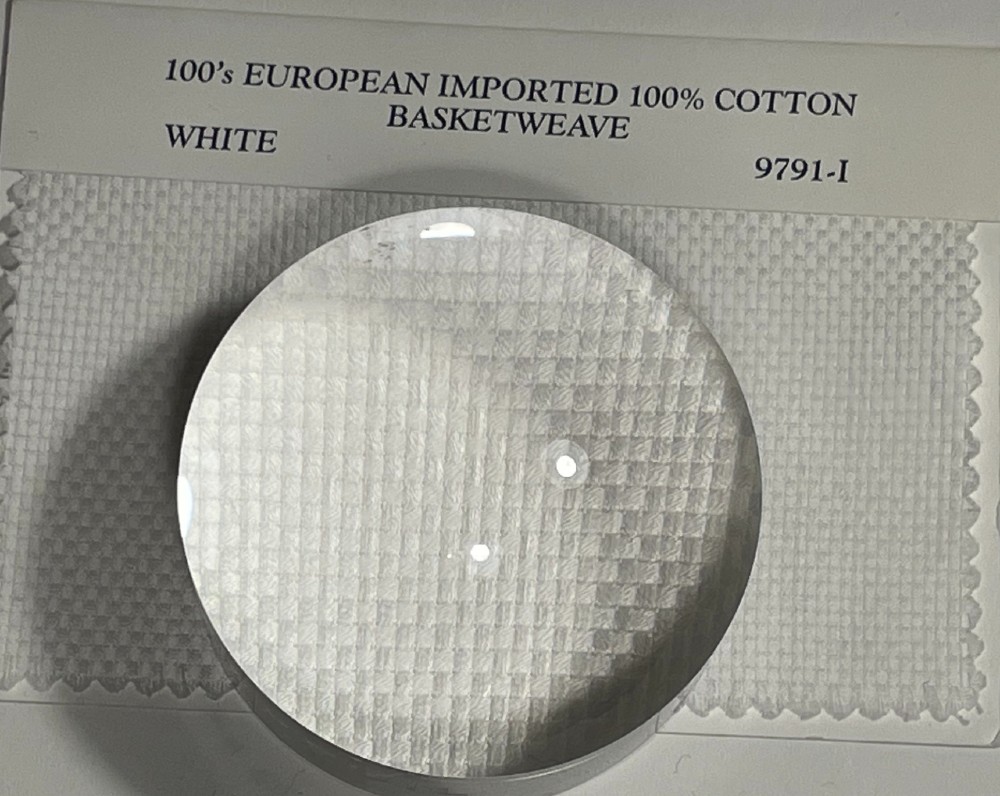 A basketweave occurs when two or more warp yarns and two or more weft yarns are woven side by side as one yarn. The visual effect, as you can imagine, is one of a basket or a checkerboard. It makes into a handsome, textured dress shirt, performing as a “non-solid solid.”
A basketweave occurs when two or more warp yarns and two or more weft yarns are woven side by side as one yarn. The visual effect, as you can imagine, is one of a basket or a checkerboard. It makes into a handsome, textured dress shirt, performing as a “non-solid solid.”
Shirts made in basketweave cloth tend to be a bit more breathable than other weaves. They’re great for suits and business casual attire, like sport coats and slacks.
Broadcloth/Poplin
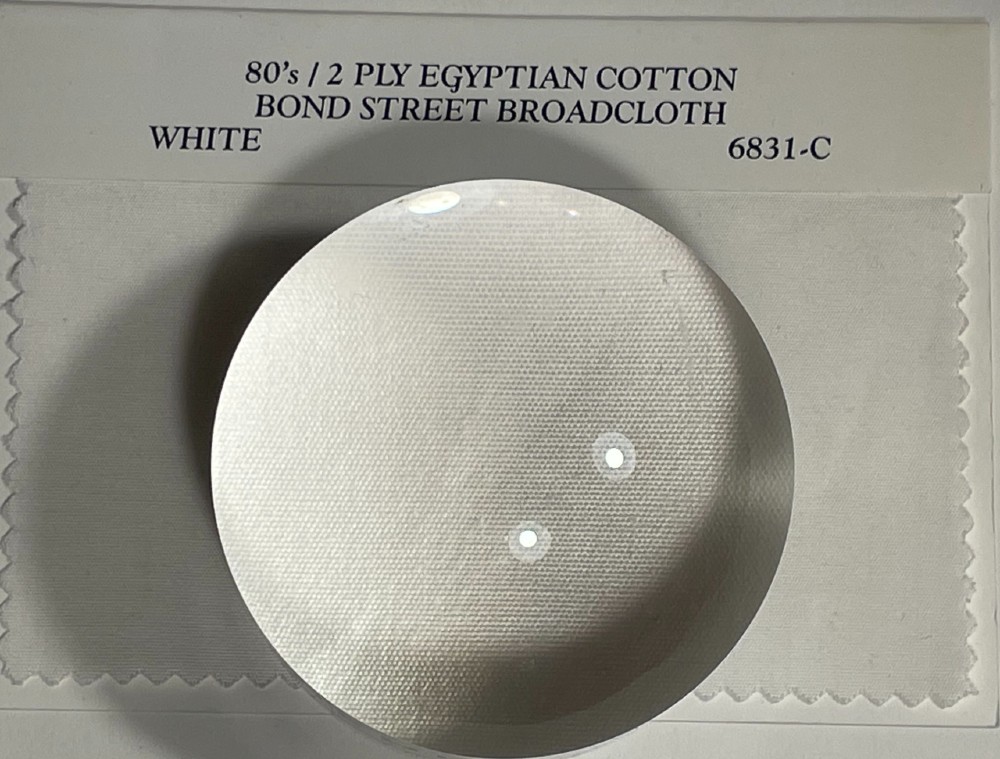 A broadcloth (or poplin weave) is your classic, “standard-looking” dress shirt. They’re more or less untextured, with a smooth touch to them. The weave is simple – over and under. Poplins make for dressy shirts – men who wear suits regularly should have a few poplin options in their wardrobes. Broadcloth makes into a beautiful tuxedo shirt, especially in a higher thread count.
A broadcloth (or poplin weave) is your classic, “standard-looking” dress shirt. They’re more or less untextured, with a smooth touch to them. The weave is simple – over and under. Poplins make for dressy shirts – men who wear suits regularly should have a few poplin options in their wardrobes. Broadcloth makes into a beautiful tuxedo shirt, especially in a higher thread count.
Poplin tends to be light and cool on the skin, though it tends to wrinkle easily.
Twill
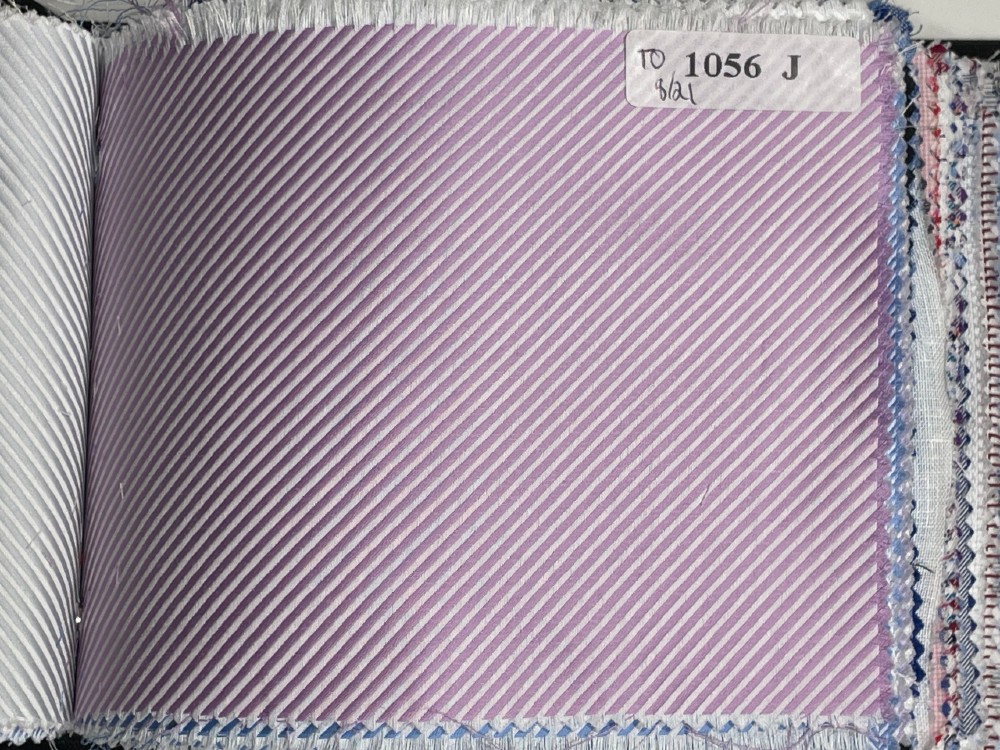 Ever seen a cotton that has a diagonal line texture to it? That’s a surefire way to identify a twill weave. Each warp and weft thread is passed under and then over two vertical threads, achieving this unique pattern.
Ever seen a cotton that has a diagonal line texture to it? That’s a surefire way to identify a twill weave. Each warp and weft thread is passed under and then over two vertical threads, achieving this unique pattern.
Twill shirts are soft and tend to be on the thicker side. They make for good workaday shirts – wear them to the office and then out for dinner afterwards.
Oxford
 Ever see a shirt with a texture that sort of looks like tiny circles woven into the fabric? If so, you’ve likely found an oxford shirt. Oxfords are a type of basketweave – the two-by-two creates a slightly rougher texture, and traditional oxford shirts are known for their heft and durability – not so much for a sumptuous handle. As such, they make into exquisite casual shirts you might wear with custom jeans or cotton pants.
Ever see a shirt with a texture that sort of looks like tiny circles woven into the fabric? If so, you’ve likely found an oxford shirt. Oxfords are a type of basketweave – the two-by-two creates a slightly rougher texture, and traditional oxford shirts are known for their heft and durability – not so much for a sumptuous handle. As such, they make into exquisite casual shirts you might wear with custom jeans or cotton pants.
Royal Oxford
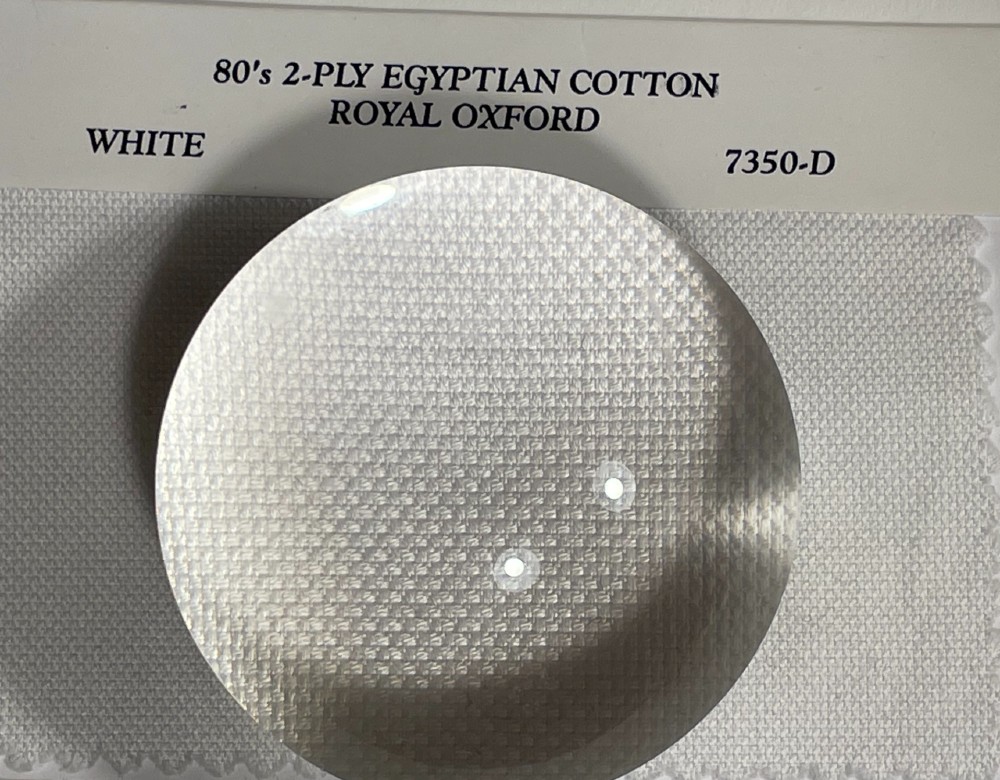 A more luxurious take on an oxford weave, royal oxfords are woven with a 2-3-2 structure instead of a two-by-two structure. This is a dressier version of the oxford, better worn with a business professional or business casual outfit than a weekend one.
A more luxurious take on an oxford weave, royal oxfords are woven with a 2-3-2 structure instead of a two-by-two structure. This is a dressier version of the oxford, better worn with a business professional or business casual outfit than a weekend one.
Pinpoint Oxford
One thread in the warp and two threads in the weft is how we get a pinpoint oxford weave (unlike the 2×2 structure of a traditional oxford). It creates a sort of broadcloth/oxford hybrid, making it a dressy shirt that has some body and texture to it, but not too much.
End-on-End
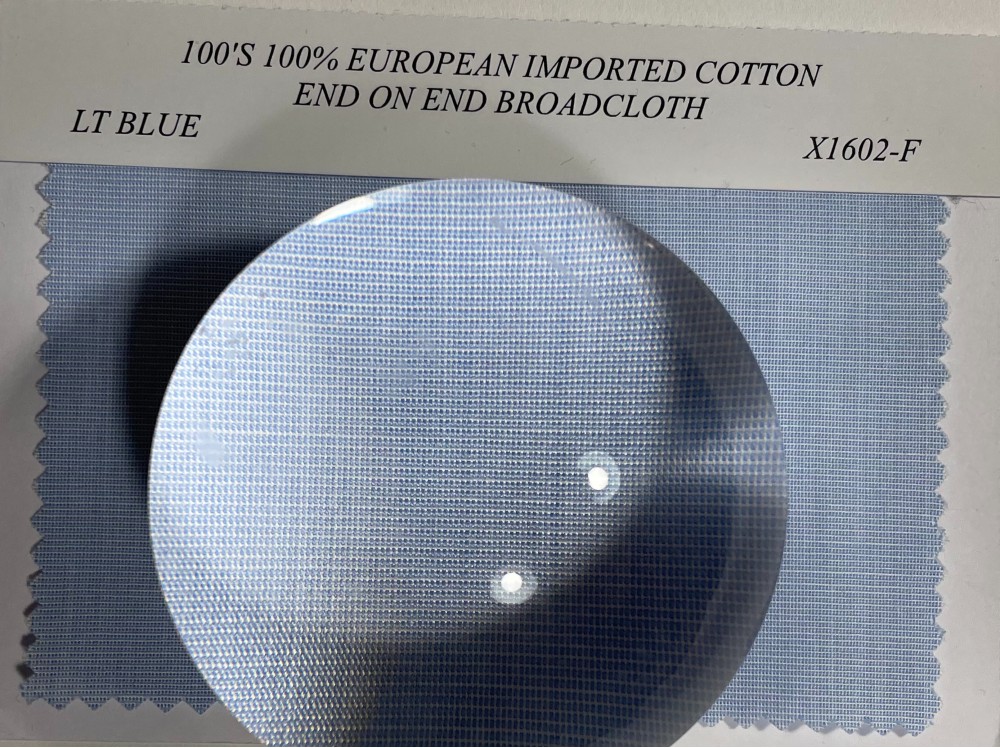 A poplin weave where the warp threads are a different color than the weft threads, one of which is often white. This creates a visual “streaking” effect, making it a great alternative to a standard poplin. A blue, lavender, or pink end-on-end cloth makes for a gorgeous shirt that looks solid from a distance but gets interesting up close.
A poplin weave where the warp threads are a different color than the weft threads, one of which is often white. This creates a visual “streaking” effect, making it a great alternative to a standard poplin. A blue, lavender, or pink end-on-end cloth makes for a gorgeous shirt that looks solid from a distance but gets interesting up close.
Satin
 Most of us hear “satin” and think that it’s a material of its own, but that’s incorrect. Satin is actually a weave, typically used in cottons, silks, and even polyester and other synthetic fibers. We achieve a satin weave by passing four or more weft yarns over a warp yarn, and four warp yarns over a single weft yarn. It creates a glossy, lustrous shirt that has a shine to it. It feels fantastic on the skin and makes into a beautiful dress shirt.
Most of us hear “satin” and think that it’s a material of its own, but that’s incorrect. Satin is actually a weave, typically used in cottons, silks, and even polyester and other synthetic fibers. We achieve a satin weave by passing four or more weft yarns over a warp yarn, and four warp yarns over a single weft yarn. It creates a glossy, lustrous shirt that has a shine to it. It feels fantastic on the skin and makes into a beautiful dress shirt.
More About Shirts
These aren’t all the different types of cotton weaves, but they’re certainly some of the most common. Curious to talk more about custom shirts? We’re here to help. Call us at 215-310-0219 or email info@henrydavidsen.com to get started.
